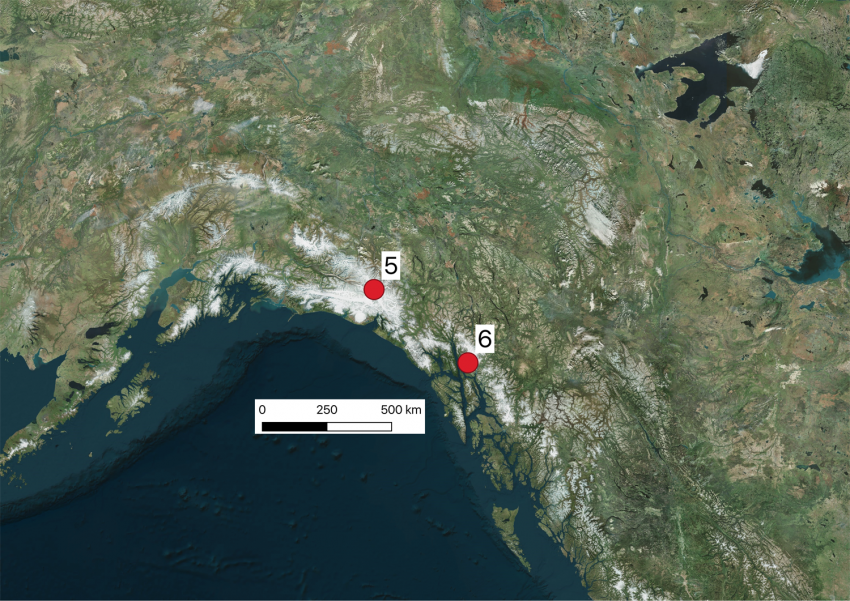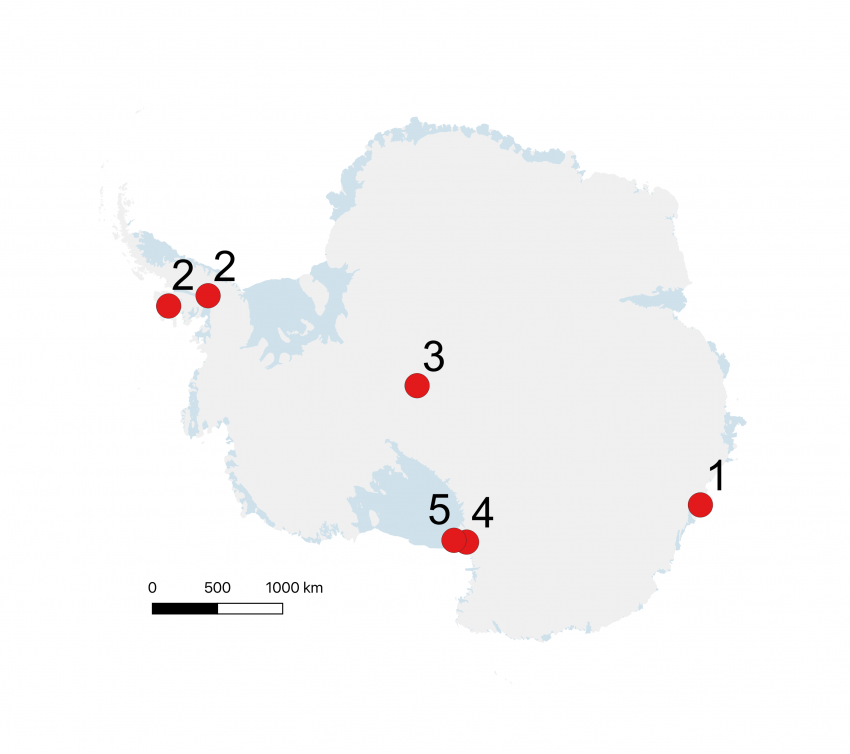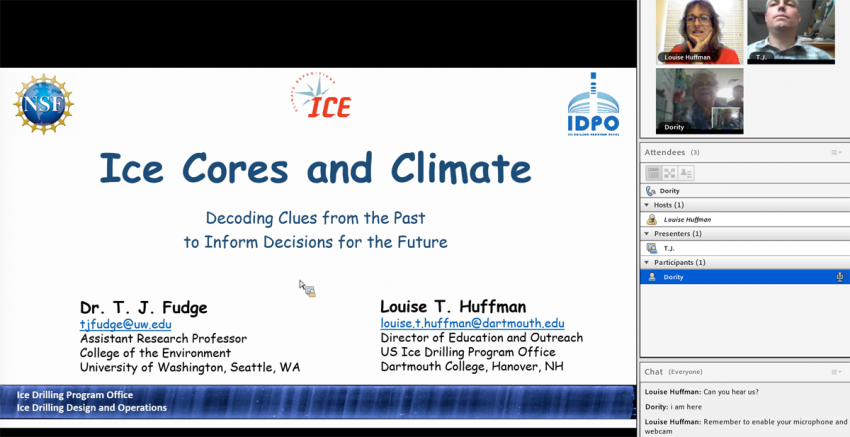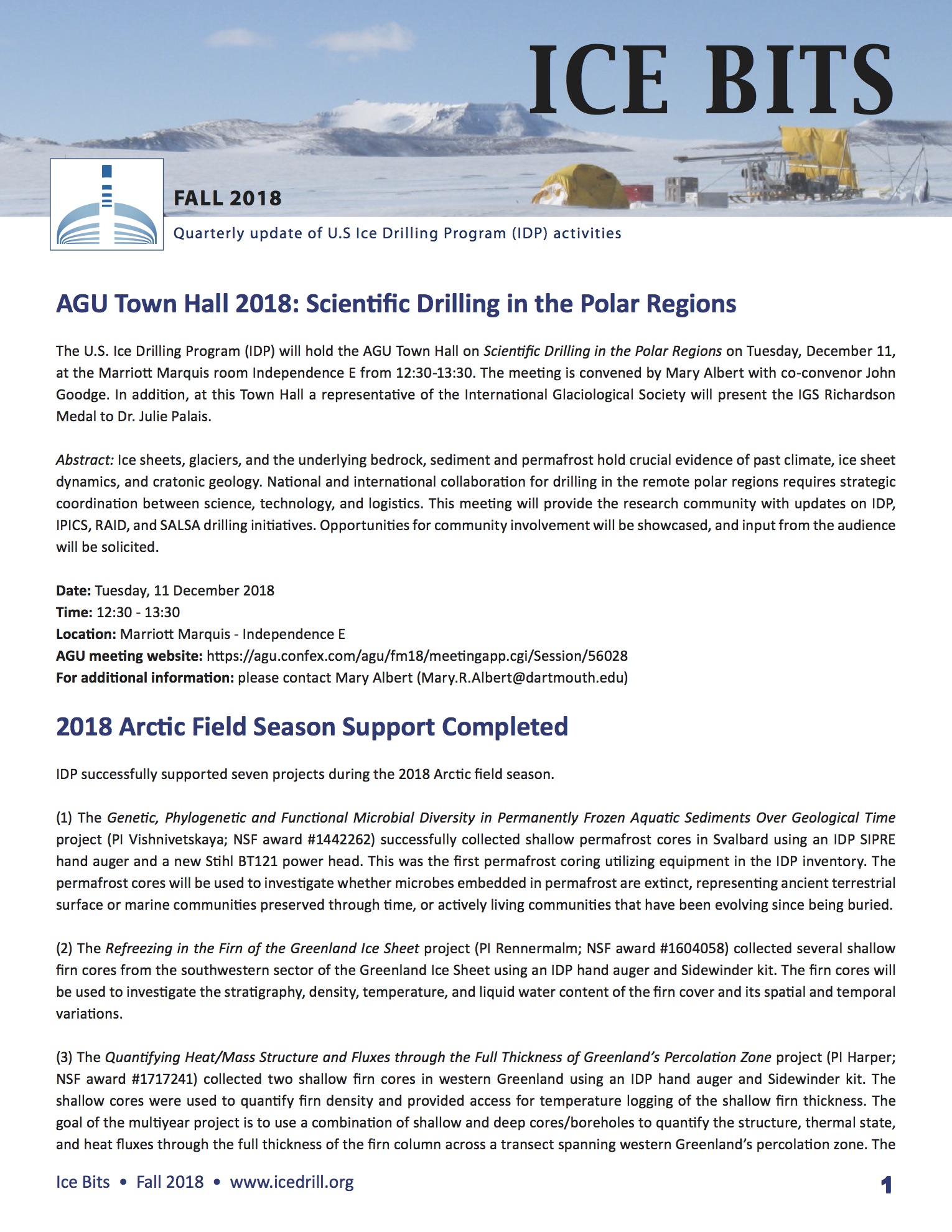IDP is providing support to the following projects during the 2018-2019 Antarctic field season:
(1) The Reconstructing Carbon-14 of Atmospheric Carbon Monoxide from Law Dome, Antarctica, to Constrain Long-Term Hydroxyl Radical Variability project (PI Petrenko; I-160-M) will sample firn air and shallow ice to a depth of about 233 meters at the Law Dome high-accumulation coastal site in East Antarctica. The goal of the project is to obtain measurements of paleo-atmospheric carbon-14 of carbon monoxide back to the 1800s when reactive trace gas emissions from human activity were minimal. These measurements will help to constrain changes in the oxidizing capacity of the atmosphere during the industrial period. The Badger-Eclipse Drill will be used to create the borehole for the firn air sampling. The 4-Inch Drill and Blue Ice Drill - Deep will be used to collect the ice core samples.
(2) The Antarctic Firn Aquifers: Extent, Characteristics, and Comparison with Greenland Occurrences project (PI Scambos; I-344-E) will investigate areas in the Antarctic Peninsula where water from summer melting of snow drains down into the deeper snow (firn) and remains as a water-flooded snow layer throughout the Antarctic winter. These zones are called firn aquifers. The project aims to confirm indications from satellite data that these areas exist on the Wilkins Ice Shelf and the George VI Ice Shelf coast. Persistent water in the upper layers of an ice shelf can destabilize the ice shelf and cause it to fracture and disintegrate or, on a non-floating ice sheet, can cause it to flow faster by draining to the bottom of the ice and reducing the friction between bedrock and glacier. Using the IDDO Hand Auger, the fieldwork is centered on shallow ice-core drilling to ~60 meters depth at the southern Wilkins Ice Shelf and the southern George VI Ice Shelf. In addition to drilling one or two cores at each of the sites, researchers will conduct ground-penetrating-radar surveys of the area around the cores to determine the varying depth and extent of the aquifers. They will also install AMIGOS (Automated Meteorology-Ice-Geophysics Observing System) stations at each site with a sensor array that will measure weather, snow temperature and accumulation, and melt-season duration and intensity. As part of the ice coring, the researchers will also measure snow density and temperature in recovered ice.
(3) The Radio and Optical Measurements of Glacial Ice Properties Using the SPICEcore Borehole project (PIs Halzen and Hanson; A-333-S) will utilize the Intermediate Depth Logging Winch to lower a series of optical+UV and radio sensor packages into the South Pole Ice Core (SPICEcore) borehole to the full depth of the hole (1751 meters). The science goals of this IceCube project include measurements of the radio absorption length of the ice from 100-1000MHz, radio birefringence in the ice, and ice index of refraction, all measured as a function of depth and ice temperature.
(4) The McMurdo Dry Valleys Long-Term Ecological Research (MCM-LTER) Program is an interdisciplinary and multidisciplinary study of the aquatic and terrestrial ecosystems in an ice-free region of Antarctica. The MCM-LTER has studied Dry Valleys ecosystems since 1993 and observed their responses to climate variations over time. Landscape connectivity, such as streams connecting glaciers to lakes, and lake level rise connecting upland soils, is recognized to be influenced by climate and geological drivers. Researchers hypothesize that increased ecological connectivity within the Dry Valleys will amplify exchange of biota, energy, and matter, homogenizing ecosystem structure and functioning. During the MCM-LTER program, researchers will examine how climate variation alters connectivity among landscape units, and how biota (species, populations, and communities) are connected across this heterogeneous landscape, using state-of-the-art science tools and methods, including ongoing and expanded automated sensor networks, analysis of seasonal satellite imagery, biogeochemical analyses, and next-generation sequencing. Researchers (PI Doran; C-511-M) will utilize the Sediment Laden Lake Ice Drill to make holes in the permanent lake ice of the Dry Valleys for access to deployed equipment and melting out cables in the ice.
(5) The Phase 2 Development of a Rapid Access Ice Drilling (RAID) Platform for Research in Antarctica project (PIs Goodge and Severinghaus; D-552-M) will conduct system updates, maintenance, and functional tests of a new drill head and cutting tool for the RAID platform. Upon request by the PIs, IDP is deploying one engineer to serve as the team leader for the maintenance season.







